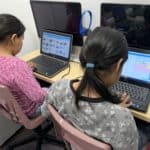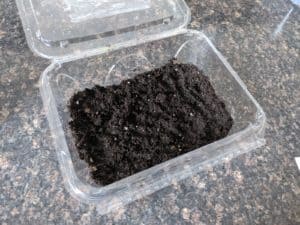It’s the 21st Century
Our education system is constantly changing and evolving just like the world around us. Children are being encouraged to explore technology at a much younger age than ever before.
Introducing different types of technology, like coding and robotics, into the daily routines of children begins to develop 21st century competencies through the use and exploration of technology. In Canada and internationally, the most prominent 21st century competencies are considered to be:
- Critical thinking – Problem solving, decision making and using higher order thinking skills in many different situations.
- Communication – Communicate effectively in a variety of ways including digital literacies.
- Collaboration – Working and learning with others in a traditional and digital setting that allows co-constructing of content and deeper learning of concepts.
- Creativity and Innovation – Pursuing new ideas, concepts and products or changing them to fit the needs of today’s world. Creativity and innovation do not necessarily mean ‘brand new’ but can include renewing or adjusting previous creations to better fit and contribute to society.
Similar to that of a Venn diagram, we can see how the three main areas of 21st century competencies (cognitive, interpersonal and intrapersonal) overlap, in the image below. By assisting young learners to develop this knowledge, skills and characteristics, we can help prepare them for a future of new technologies.
Why Teach Coding to Young Minds?
Encouraging young children to develop 21st century competencies can help them reach their full potential by encouraging a growth mindset. A growth mindset recognizes a challenge as an opportunity to grow and failure as an opportunity to develop further knowledge and skills. Carol Dweck dives deep into the notion that when faced with a challenge there are two mindsets a person will use to solve their problem – growth mindset and fixed mindset. In the illustration below, you can see the differences between these two mindsets and how a growth mindset can allow learners to reach a higher level of achievement.
A professor in my undergrad mentioned on many occasions, throughout the program, that ‘we as teachers are preparing students for a future that we know nothing about’. This is something that resonates with me directly and demonstrates the importance of 21st century competencies. Teachers want to ensure that young minds are equipped with a variety of skills, knowledge and characteristics that will apply to many areas.
Coding is just one area of learning that encourages children to explore and use many of these 21st century competencies. Block coding used in programs such as Scratch or Wonder’s Blockly, allow young children to develop some of the following knowledge, skills and characteristics:
- Critical thinking
- Problem solving
- Communication
- Creativity
- Flexibility
- Digital citizenship
- Perseverance
- Conflict resolution
- Collaboration
This list is just a few of the skills, knowledge and characteristics that can be built through the exploration and use of coding. Some of these competencies and skills are most desired according to the Future Skills Report 2018 completed by RBC:
Coding Concepts for Young Minds
There are many coding concepts that can be taught and explored. A few coding concepts that young minds are able to learn, transfer and apply to different situations include:
- An algorithm is a list or series of steps to complete a specific task. For example, following a recipe on how to bake a cake.
- A sequence is a specific order that the series of steps or instructions from an algorithm are performed. For example, when baking a cake you can’t put it in the oven until all the ingredients are added and stirred.
- A loop is an action in a code that causes the code to repeat over and over. For example, instead of telling someone to cut a piece of cake, then cut another piece, then cut another piece, you could say, cut enough cake for three people.
- Decomposition is the thought process of developing a solution to a given problem by breaking it down into smaller more manageable pieces. For example, when baking a cake, breaking down the recipe so that you mix wet ingredients separate from dry ingredients to ensure that the cake is thoroughly mixed when combined, for best results.
- Branching is the concept of checking conditions by making a decision that depends on what is happening or what has happened. For example, before getting ready to go outside you check the weather.
These are five coding concepts that children can learn through unplugged coding opportunities such as the Unplugged Coding Series – Introduction To Coding by Pinnguaq. Many of these concepts do not require technology which allows kids to explore the concepts physically and mentally. A few other resources that help teach and develop these five concepts include:
Many of these resources can be found within the Pinnguaq Makerspaces in both Lindsay, Ontario and Iqaluit, Nunavut.
Use the Pandemic to Learn to Code
The 2020 pandemic is the perfect time to learn new skills and explore! Why not start learning basic coding concepts at home with your young learners? You don’t need any previous experience coding to begin, start slow and make sure that you are selecting engaging activities that are relevant to your learner.
Check out our resources available through the Pinnguaq website. There are activities available that can help young learners develop basic coding concepts such as learning Scratch Basics.
Remember that basic computer coding concepts can apply to real-life situations such as the activity produced by Tanner Big Canoe on Coded Cooking: Homemade Pizza. Other real-life examples such as brushing your teeth, playing a game or exploring outdoor activities.
Use the resources listed above and begin to introduce the five basic coding concepts through exploration. Once you have caught your learner’s attention, you can then begin exploring the why’s and how’s. By encouraging the exploration of basic coding concepts you can assist your young learner to develop the knowledge, skills and characteristics that will help to prepare them for anything they set their mind to.
Resources
- Pinnguaq’s Unplugged Coding: Introduction to Coding Series
- Pinnguaq’s Introduction to Scratch Basics Coding Series
- Pinnguaq’s Coded Cooking: Homemade Pizza
- TedTalk – The power of believing that you can improve by Carol Dweck
References
- BBC Bitesize – Introduction to computational thinking. Accessed May 2020.
- Government of Ontario. Winter 2016 Edition. Phase 1 – Towards Defining 21st Century Competencies for Ontario: 21st Century Competencies Foundation Document For Discussion. Accessed May 2020.
- Fixed vs. Growth: The Two Basic Mindsets That Shape Our Lives. Accessed May 2020.
- RBC’s Future Skills Report 2018: Humans Wanted – How Canadian youth can thrive in the age of disruption. Accessed June 2020.
- World Economic Forum 2016 – The Future of Jobs. Accessed June 2020.




